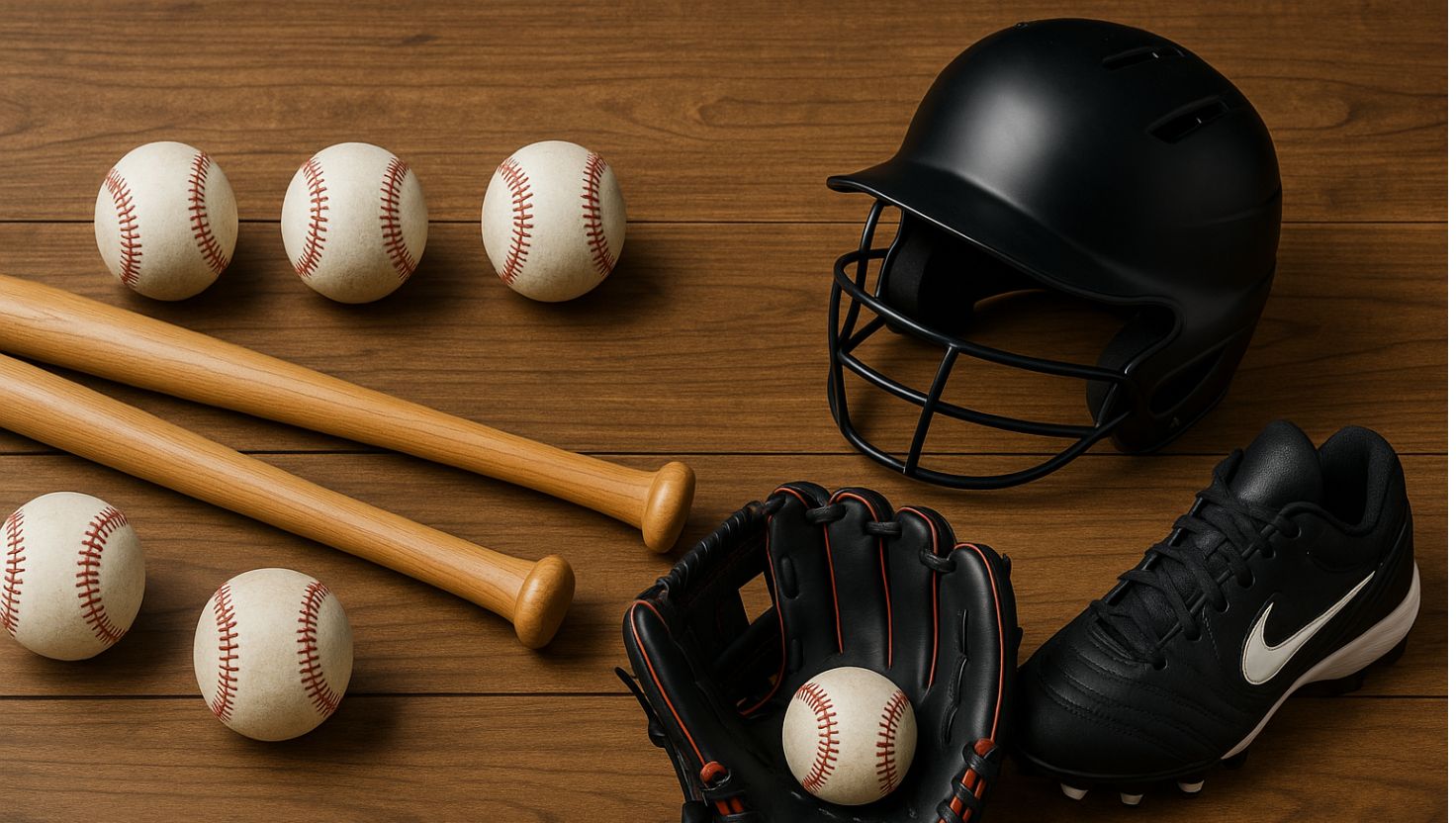Who doesn’t like to play baseball? Baseball has been around for generations and is still as much fun as it ever was, which is why it has earned the nickname “America’s Pastime.”
Do you know what people like the most about baseball? The home runs, the dives, the bases, the chants. They all keep the game alive.
The baseball Equipment and Accessories, though, are the real show-stopper. This gear ensures the safety of baseball players during even the most intense games.
You may find something you can’t play without. So let’s look at some baseball equipment and accessories that might be game-changing.
List Of Baseball Equipment
More than 26 million Americans play baseball regularly, and around 15.6 million amateur players play baseball in the United States of America. That works out to around 7.58 percent of the overall population.
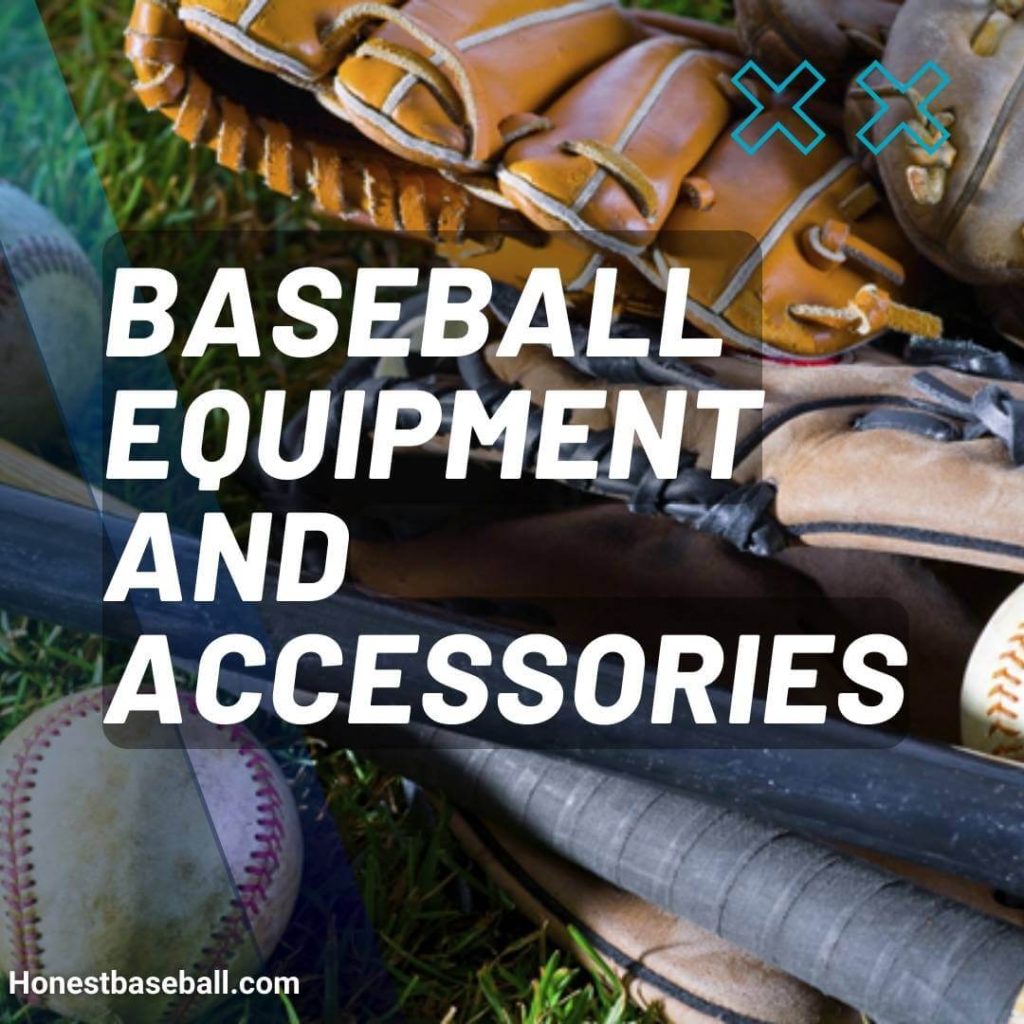
Let’s see what the essential baseball equipment is.
1. Baseball Bat
A baseball bat is one of the most important baseball equipment. We can’t think to play baseball without this.
There are different types of bats in a baseball game. The mains are wooden bats, aluminum or alloy bats, hybrid bats, and composite bats.
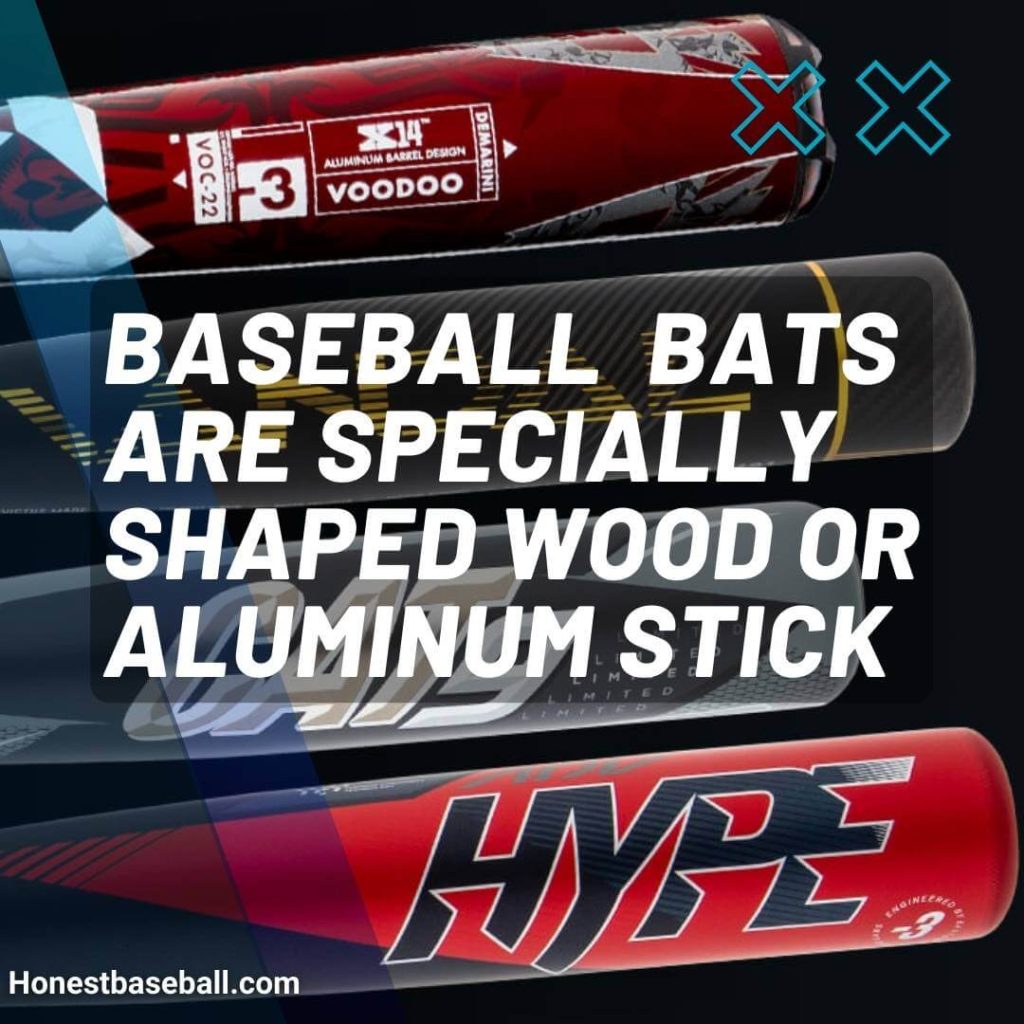
Wood Bats are the most used bats in baseball. Aluminum bats are used at the college level and it is the oldest type of nonwood bat. Composite bats are made of wood and metal, allowing more flexibility. Hybrid bats are aluminum barrels with composite handles.
Before you go buy a baseball bat, consider the following-
- What bat size do you need?
- What skill level are you competing?
- What is your budget?
- What are your league restrictions?
Baseball bats can cost you from $50 to $400. Price ranges vary depending on both the brand and the level of competition.
You should also look out for the baseball certification. Some of the certified baseball bats are BBCOR bats, USSA bats, and USA Bats.
Branded baseball bat gives you a great grip and a larger sweet spot to hit the ball farther. Some of the best baseball bat brands are Rawling, Easton, Marucci, Mizuno, etc.
Top 5 Popular Baseball Bats (2025)
- Louisville Slugger Meta PWR BBCOR: The Meta PWR continues its reign as a top BBCOR choice, known for its massive barrel and exceptional trampoline effect, leading to impressive power. Its three-piece construction and Mash Composite Barrel technology provide a forgiving feel and a large sweet spot, making it ideal for power hitters seeking maximum exit velocity. The balanced swing weight allows for good bat speed despite its power-loaded design.
- DeMarini The Goods BBCOR: The Goods consistently ranks high for its explosive power and stiff feel, favored by strong hitters. Its X14 Alloy Barrel is engineered for maximum energy transfer on contact, resulting in high exit velocities. The Direct Connection point enhances stiffness, providing a powerful and direct feel. While powerful, it still offers a reasonably balanced swing weight for good control.
- Marucci CAT X BBCOR: Building on its predecessors, the CAT X (CAT 10) offers a balanced feel with a focus on a wider sweet spot and reduced vibration. The AZR Alloy barrel is engineered for forgiveness and responsiveness across a larger hitting area. Its Liquid-Gel Dampening Knob significantly minimizes sting on mishits, making it a comfortable and powerful option for a variety of hitters.
- Easton Hype Comp BBCOR: The Hype Comp is a top composite BBCOR bat known for its balanced swing and explosive performance. Its Thermo Comp barrel technology creates a massive sweet spot with impressive pop and forgiveness. The Opti-Flex handle technology provides optimized stiffness for power hitters while maintaining good feel for contact. It’s a versatile option that suits a wide range of swing types.
- Rawlings Quatro Pro BBCOR: The Quatro Pro is a two-piece composite bat engineered for both power and speed. Its redesigned Q-Drive Technology maximizes barrel flex for increased trampoline and exit velocity. The balanced swing weight allows for fast bat speeds, making it a favorite among hitters looking for a combination of power and control. The Focused Flex Technology in the handle enhances energy transfer while reducing vibration.
2. The Ball ( Baseball Ball)
The whole game is named after it. The balls have rubberized cores wrapped in yarn and coated with full-grain leather on the outside. Some balls are different from others, and some are wrapped in plastic making them more sturdy in damp weather.
The average baseball is 5.25 ounces in weight. They are perfectly round, and they are made to be thrown. If you do not believe me, go ahead and pick one up; I guarantee you will want to throw it away straight immediately!
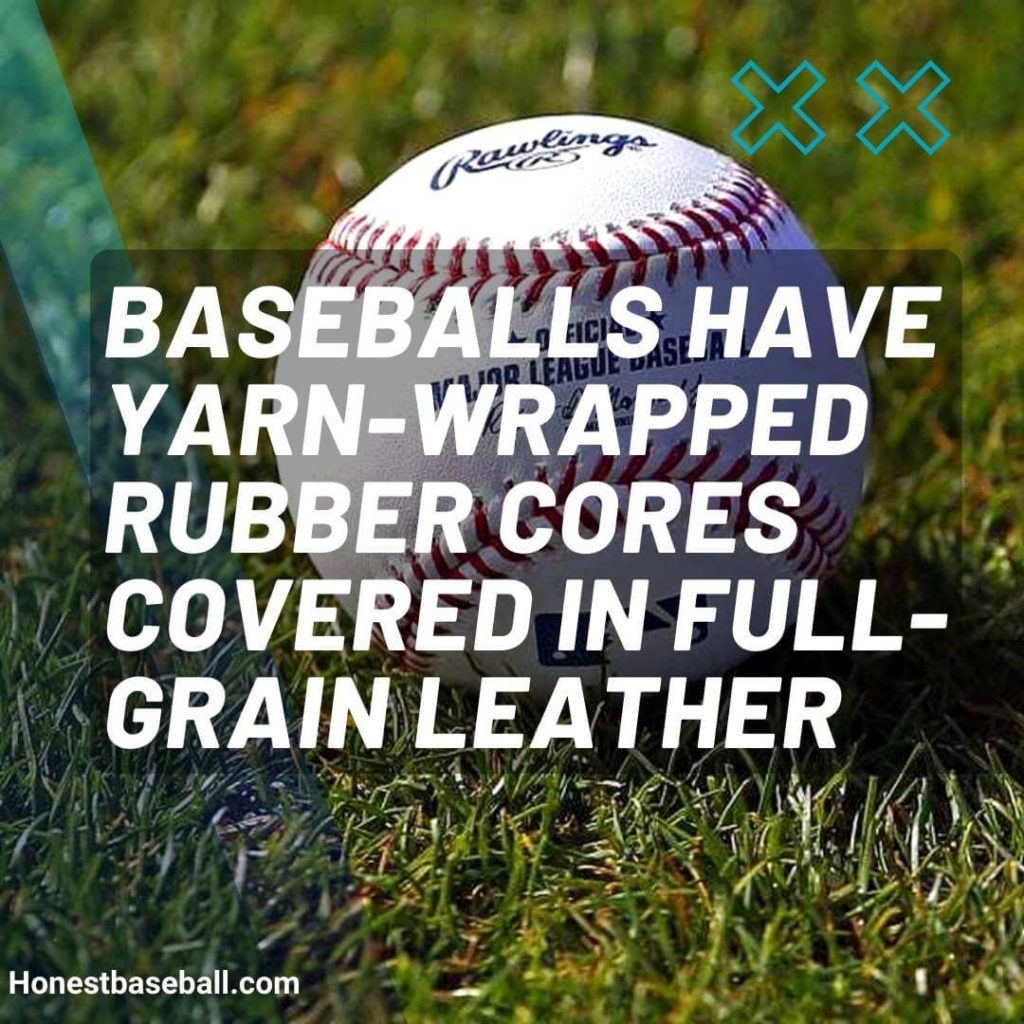
To train players in hitting and hip movement, Muhl balls are often used. If you are low on strength, Muhl ball can fix your problem.
Know more: How Many Baseballs Are Used In A Game? Surprising Facts!
Top 5 Popular Types of Baseball Balls
- Official League Baseballs (OAL): These are the standard baseballs used in Major League Baseball. They feature a tightly wound cork and rubber pill core, wrapped in premium full-grain leather that is hand-stitched with 108 double stitches. OAL balls are known for their consistent performance, durability, and the feel preferred by professional players. Brands like Rawlings are the official supplier.
- Official High School Baseballs (NFHS): These baseballs are manufactured to meet the specifications set by the National Federation of State High School Associations. While similar in construction to OAL balls, they may have slightly different core materials or winding specifications. Durability and consistent performance are key, ensuring they can withstand the rigors of high school play.
- Youth League Baseballs: Designed for younger players, these baseballs often feature softer cores and sometimes synthetic leather covers to make them safer and easier to grip for smaller hands. They still aim to provide consistent flight and bounce but prioritize player safety and confidence. Various weight and size options are available for different age groups.
- Training Baseballs (Weighted/Dimpled/Restricted Flight): This category encompasses a variety of specialized balls used for specific training purposes.
- Weighted Baseballs: Heavier than standard balls, used to develop throwing power and velocity.
- Dimpled Baseballs: Designed to reduce flight distance, ideal for practicing in limited spaces.
- Restricted Flight Baseballs (R.I.F.): Softer and with a less lively core, these balls are used in early stages of youth baseball to build confidence and reduce the risk of injury.
- Soft Training Baseballs (Safety Baseballs): These are extremely soft baseballs, often made of foam or a very pliable synthetic material. They are designed for indoor practice or very young players to minimize the risk of injury during drills. While they don’t replicate the exact feel or flight of a regular baseball, they are invaluable for skill development in safe environments.
3. Catcher’s Mitt
In baseball, outfielders, and catchers each use different types of gloves. This glove is larger and more padded than others.
It’s not easy to catch a fastball at 90 miles per hour, so catchers need all the protection they can get. The padding reduces the mobility of the catcher’s hand.

To keep your favorite glove for a long time, do take care of them. There is also glove care equipment on the market like oil so you can polish your gloves. Clean your baseball gloves after every match. Here’s a guide on How to Clean Catchers’ Gear.
The catcher’s mitt price can range from $60-$300. Check out these Best Baseball Gloves Under $100 In 2025.
Top 5 Popular Types of Catcher’s Mitts
- Full-Grain Leather Mitts: These are the premium standard, favored by serious players at the high school, college, and professional levels. Full-grain leather is known for its exceptional durability, ability to mold to the catcher’s hand over time for a custom fit, and excellent feel for the ball. While they require a more extensive break-in period, they offer the best longevity and performance.
- Steerhide Leather Mitts: Steerhide is another high-quality leather that offers a good balance of durability and moderate break-in time. It’s generally a bit stiffer than full-grain leather initially but still provides excellent protection and can be shaped to the catcher’s preference. Steerhide mitts are a popular choice for players looking for quality without the premium price point of full-grain.
- Kip Leather Mitts: Kip leather is a lighter weight and softer hide compared to full-grain or steerhide. This translates to a quicker break-in period and a more supple feel. While perhaps not as ultimately durable as thicker leathers, kip leather mitts offer excellent comfort and responsiveness, making them a favorite among catchers who prioritize feel and a faster break-in.
- Synthetic Leather Mitts: These mitts are typically more budget-friendly and require little to no break-in time. While they may not offer the same level of durability or molding capability as genuine leather, synthetic options can be a good choice for younger players or those new to the position. Technology in synthetic leathers has improved, offering decent performance for recreational play.
- Fastpitch Catcher’s Mitts: Specifically designed for the demands of fastpitch softball, these mitts often feature a deeper pocket and a stiffer construction to handle the larger size and higher velocity of fastpitch softballs. They are also tailored to fit a female hand. While the fundamental purpose is the same, the design and features are optimized for the specific sport.
4. Catcher’s Gear
Catchers must wear protective gear because they are the most susceptible to baseball pitchers. If you go catching balls behind hitters without gears, you might not make it to the next game.
The Catcher’s Gear consists of a helmet, upper body protection, and knee, shin, and foot guards. You can outfit yourself with a low-cost $100 gear set or a high-end $400 gear set.
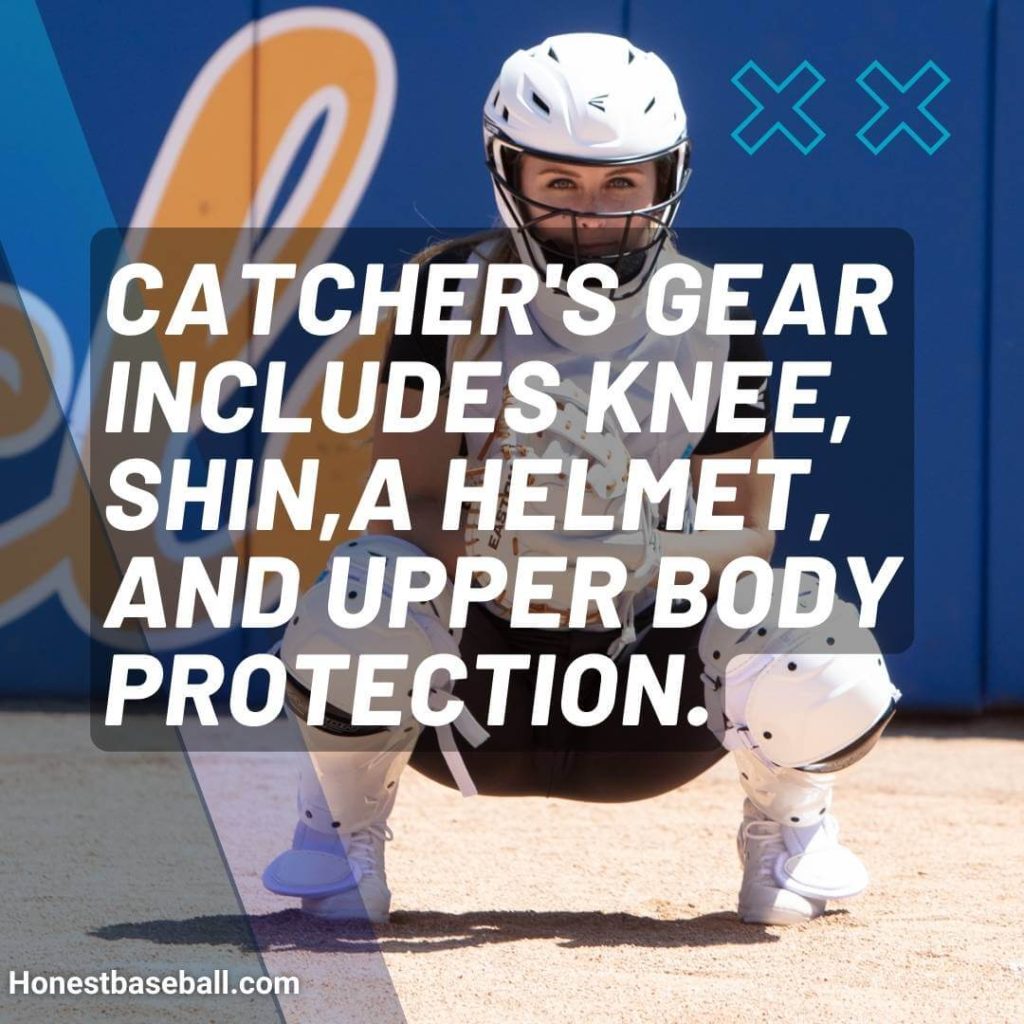
Top 5 Popular Catcher’s Gear (Sets and Key Pieces)
- Easton Elite X Catcher’s Set: This is a consistently popular mid-to-high-level set known for its combination of protection, comfort, and mobility. Key features often include:
- Helmet: Streamlined design with good visibility and impact absorption. Models like the Elite X feature multi-density padding.
- Chest Protector: Contoured fit for protection without restricting movement, often with segmented padding and strategic ventilation.
- Leg Guards: Anatomically designed for a comfortable and secure fit, with reinforced knee and shin protection.
- All-Star System Seven Catcher’s Gear: A top-tier choice favored by many high school, college, and even professional catchers. Known for its exceptional protection and customizable fit. Key features often include:
- Helmet: High-impact resistant shell with advanced padding systems like the MVP2500 series.
- Chest Protector: NOCSAE certified, often with wedged abs and sternum padding for enhanced protection.
- Leg Guards: Moldable shin plates for a personalized fit and maximum protection.
- Under Armour Converge Catcher’s Set: Under Armour has become a strong contender in the catcher’s gear market, offering a balance of performance and style. Key features often include:
- Helmet: Lightweight and breathable design with good impact management.
- Chest Protector: Strategic padding placement for protection and mobility, often with a HeatGear liner for comfort.
- Leg Guards: Form-fitting design with durable outer shells and comfortable inner padding.
- Rawlings MACH Series Catcher’s Gear: Rawlings offers a range of catcher’s gear, with the MACH series often hitting a sweet spot for serious players looking for quality and protection. Key features can include:
- Helmet: Sleek profile with ventilation and impact-absorbing technology.
- Chest Protector: Designed for a close fit with strategic padding and rebound control.
- Leg Guards: Lightweight and flexible with enhanced knee protection.
- Individual Mitt Focus: Wilson A2000 Series Catcher’s Mitts: While not a full set, the Wilson A2000 series is legendary for its quality and performance, making it a popular individual mitt choice at various levels. Known for its Pro Stock leather, which provides exceptional feel, durability, and break-in. Specific models like the P12 or 1791 are often favored by catchers for their patterns and pocket design.
5. Batting Gloves
Batting gloves are very necessary equipment in the baseball. Batting gloves will improve your griping as well as reduce the discomfort at the time of hitting.
Right batting gloves help to generate more power and improve accuracy while face pitching.
Top 3 Popular Types of Baseball Batting Gloves
- Leather Palm Gloves (e.g., Franklin Pro Classic, Rawlings Workhorse): These are a long-standing favorite among players at all levels for their exceptional feel and durability. The leather palm provides excellent grip and allows for a direct connection to the bat. Many pro-level and serious amateur players prefer the natural feel and long-lasting performance of leather. Different grades of leather (like Pittards or sheepskin) offer varying levels of softness and grip.
- Synthetic Palm Gloves (e.g., Under Armour Yard, Easton Walk-Off): Synthetic palm gloves have gained significant popularity due to their enhanced grip in various weather conditions and often more affordable price point compared to full leather. Modern synthetic materials offer excellent tackiness and can be quite durable. They often feature flexible backs made of materials like Lycra or Spandex for a comfortable and unrestricted feel. Many players appreciate their consistent grip and easy care.
- Hybrid Palm Gloves (e.g., Nike Huarache Elite, Marucci Quest): These gloves combine the benefits of both leather and synthetic materials. They might feature a durable leather palm in high-wear areas with synthetic overlays or strategically placed synthetic materials for enhanced grip or flexibility in other parts of the hand. This design aims to offer a balance of feel, durability, and performance, catering to players who want the best of both worlds.
6. Cleats
The cleats let players move more efficiently and effectively through the dirt infield and the grass in the outfield. The bottoms of your cleats include spikes that dig into the mud and sand, giving you the grip you need to run bases and avoid outs.
For further protection while on the field, invest in a good pair of cleats to cushion your feet and ankles. Spikes may be constructed of metal or molded plastic, while cleats are often made of leather.
While metal cleats provide maximum efficiency, plastic cleats are a more cost-effective alternative.
Top 3 Popular Types of Baseball Cleats
- Metal Cleats (e.g., Nike Alpha Huarache Elite, New Balance COMPv3 Metal): Favored by high school, college, and professional players for their superior traction on all field surfaces, especially dirt and grass. The metal spikes dig firmly into the ground, providing maximum grip for explosive acceleration, quick stops, and sharp turns. While offering the best traction, they are often restricted in younger age groups due to safety concerns.
- Molded Cleats (e.g., Under Armour Harper 7, Adidas Adizero Afterburner 8): These cleats feature durable rubber or TPU (thermoplastic polyurethane) studs molded directly into the outsole. They offer good traction on various surfaces and are generally more comfortable for running and fielding compared to metal cleats. Molded cleats are a popular choice for youth leagues and players who prioritize comfort and versatility. They are also often more affordable than metal options.
- Hybrid Cleats (e.g., Nike Vapor Ultrafly 4 Keystone, New Balance Fresh Foam X 880v5 Turf): Hybrid cleats aim to combine the benefits of both metal and molded options. They typically feature a combination of strategically placed metal spikes in high-traction areas (like the forefoot and heel) with molded studs in other areas for comfort and versatility. This design seeks to provide good grip where it’s needed most while maintaining some of the comfort of molded cleats, making them a popular choice for players looking for a balance of performance and comfort on various field conditions.
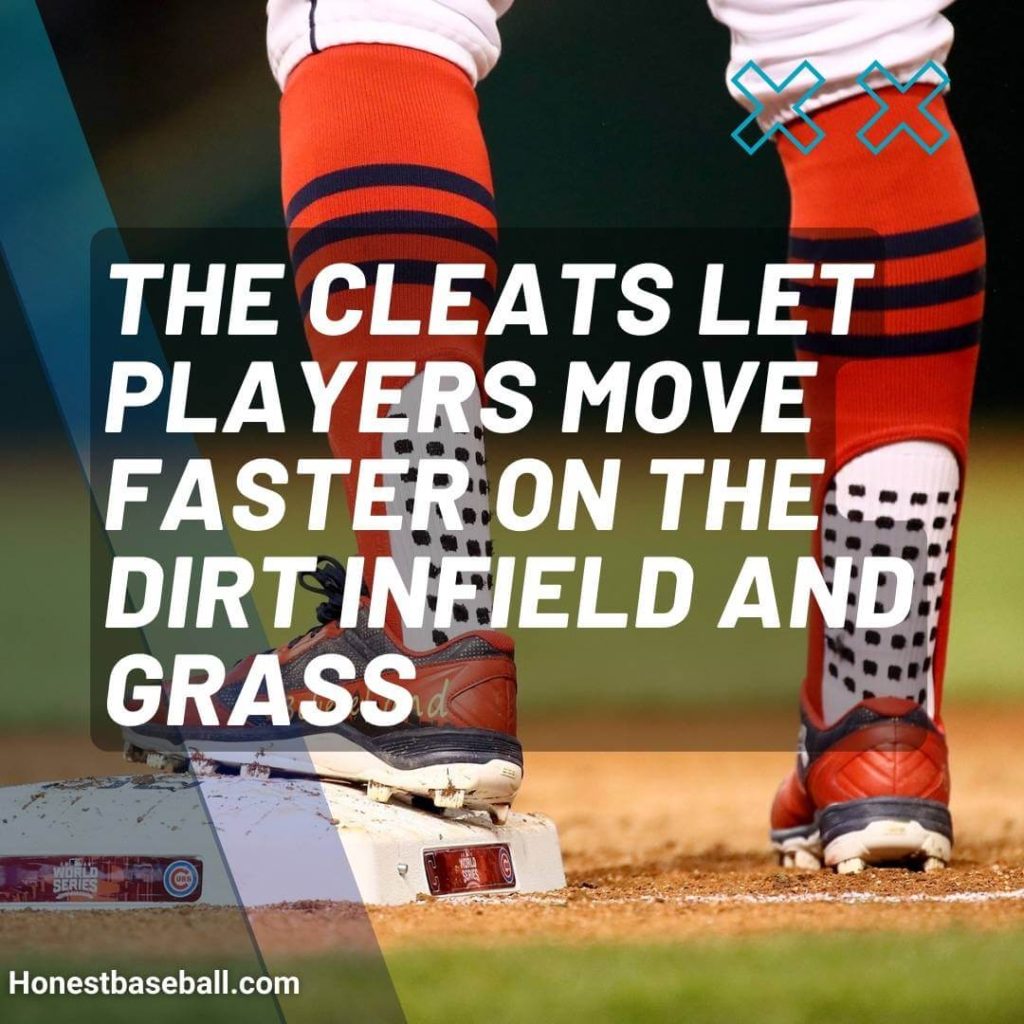
Read some reviews:
7 Best Turf Shoes For Baseball Hustlers – After Use Reviews
Under Armour Leadoff Cleats Low RM: Analysis and Review
Molded Cleats vs Turf Shoes | Which One Do You Need?
7. Helmet
Baseball helmet is another essential element that help to protect baseball players. It protects head and brain from high speed pitching. Players also feel comfortable at the time of hitting ball.
Top 3 Popular Types of Baseball Helmets
- Single Flap Helmets (e.g., Easton Alpha Tectonic 2.0, Rawlings MACH EXT): These helmets feature a single ear flap, typically covering the batter’s side facing the pitcher (right ear for right-handed hitters, left ear for left-handed hitters). They offer focused protection on the most vulnerable side while allowing for better visibility on the non-flapped side. Single flap helmets are popular among players who prioritize a less obstructed view but still want crucial protection. Many leagues mandate at least one ear flap for batters.
- Double Flap Helmets (e.g., Mizuno B6 Adult Batter’s Helmet, DeMarini Paradox Protege Pro): These helmets provide ear protection on both sides of the head. They are often preferred by players who prioritize maximum protection and are sometimes mandatory in certain youth leagues. While they offer comprehensive coverage, some players might find them slightly more restrictive in terms of peripheral vision compared to single flap options.
- Coolflo Helmets (e.g., Rawlings MACH EXT Coolflo, Easton Z5 Hyperskin Coolflo): “Coolflo” refers to a specific ventilation technology developed by Rawlings and widely adopted by other brands. These helmets are designed with strategically placed vents to maximize airflow and keep the batter’s head cooler and more comfortable, especially in hot weather. Coolflo technology can be found in both single and double flap helmet designs, making it a popular feature for players seeking better breathability without sacrificing protection.
8. Batting Cages
Batting cages help the batters to practice themselves. With the help of someone or pitching machines, batters can improve the batting skill.
Top 2 Popular Types of Baseball Batting Cages
- Portable Batting Cages (e.g., Jugs Portable Batting Cage, Bownet Big Mouth X Series): These cages are designed for easy setup, takedown, and transportation. They often feature a collapsible frame made of fiberglass or steel poles and a durable netting. Portable cages are ideal for individual practice in backyards, temporary field setups, or teams that need to move their cage frequently. While they offer convenience, they might not be as robust or as large as permanent structures.
- Permanent/Commercial Batting Cages (e.g., DuraCage Commercial Cages, Iron Mike Pitching Machine Cages): These are heavy-duty, fixed structures typically found at training facilities, baseball academies, and professional fields. They are built with sturdy steel frames and high-quality netting designed to withstand constant use and high-velocity impacts. Permanent cages offer a larger hitting area and can often accommodate multiple hitters or pitching machines. They require professional installation and are a long-term investment.
9. Pitching Machines
Pitching machine is an important baseball equipment. You can practice your batting and improve the hitting with this equipment.
Top 3 Popular Types of Baseball Pitching Machines
- Wheel Machines (e.g., Jugs BP1, Hack Attack 2, Sports Attack Junior Hack Attack): These machines use one, two, or three spinning wheels to propel baseballs. They are known for their ability to throw a wide variety of pitches, including fastballs, curves, sliders, and even split-fingers, depending on the model. Multi-wheel machines often offer more realistic spin and velocity. Wheel machines are a popular choice for serious training at all levels, from youth leagues to professional teams.
- Iron Mike Arm-Style Pitching Machines (e.g., Iron Mike MP-4, Iron Mike Pro Cage): These machines mimic a human pitcher’s arm motion to deliver consistent and accurate pitches. They are known for their reliability and ability to throw strikes consistently. While typically only throwing fastballs and changeups, their accuracy makes them excellent for batting practice, especially for younger players learning to hit consistently. Iron Mike machines are often found at batting cages and training facilities.
- Soft Toss Machines (e.g., Jugs Toss Machine, SKLZ Pitch Trainer): These machines are designed for close-range batting practice and focus on hitting mechanics and hand-eye coordination. They gently toss balls at a consistent height and interval, allowing hitters to repeatedly practice their swing. Soft toss machines are highly portable and affordable, making them a great tool for individual practice at home or on the field. They are particularly beneficial for younger players and for warming up before games or practices.
Baseball Accessories
1. Grip Tape
Grip tape make sure you hold your bat firmly while you swing your bat at maximum speed. Most bats already come with some grip tape on them, (wooden bats use pine tar) but it can wear down over time.

Players can buy polymer grip tape or use athletic tape as a cheaper alternative, either will do the job. Not only is grip tape effective, but with some cool colors, it can add some personality to your bat.
I see grip tapes as game-changing baseball equipment. To become a monster at batting, check out the best 8 grip tapes with buying guide.
2. Protective Cup
Protective Cups are the most common baseball safety equipment since baseball is played mostly by all males on the field. They are used to provide comfort and protection around the genital area when playing.
They are composed of flexible plastic with rounded edges and a layer of foam on the inside. A single piece might cost between $10 and $15. Be sure to wear them before the game, or you’ll regret them for a long time.
3. Batting Tees
This is the most essential of all the accessories we’ve discussed so far. The best approach to perfect your swing is to hit off of a batting tee over and over again.
Hitting mechanics and positive muscle memory may be improved by keeping the ball in a fixed location. You may concentrate on improving a problem by lowering the tee if you’re having trouble hitting low outside pitches.
A portable batting tee lets you swing in your garden, garage, or field. Check out these best baseball tee ball bats to improve your hitting.
4. Sunglasses
Baseball sunglasses improve color and contrast on the baseball pitch, enabling you to track every field feature and throw with maximum clarity.
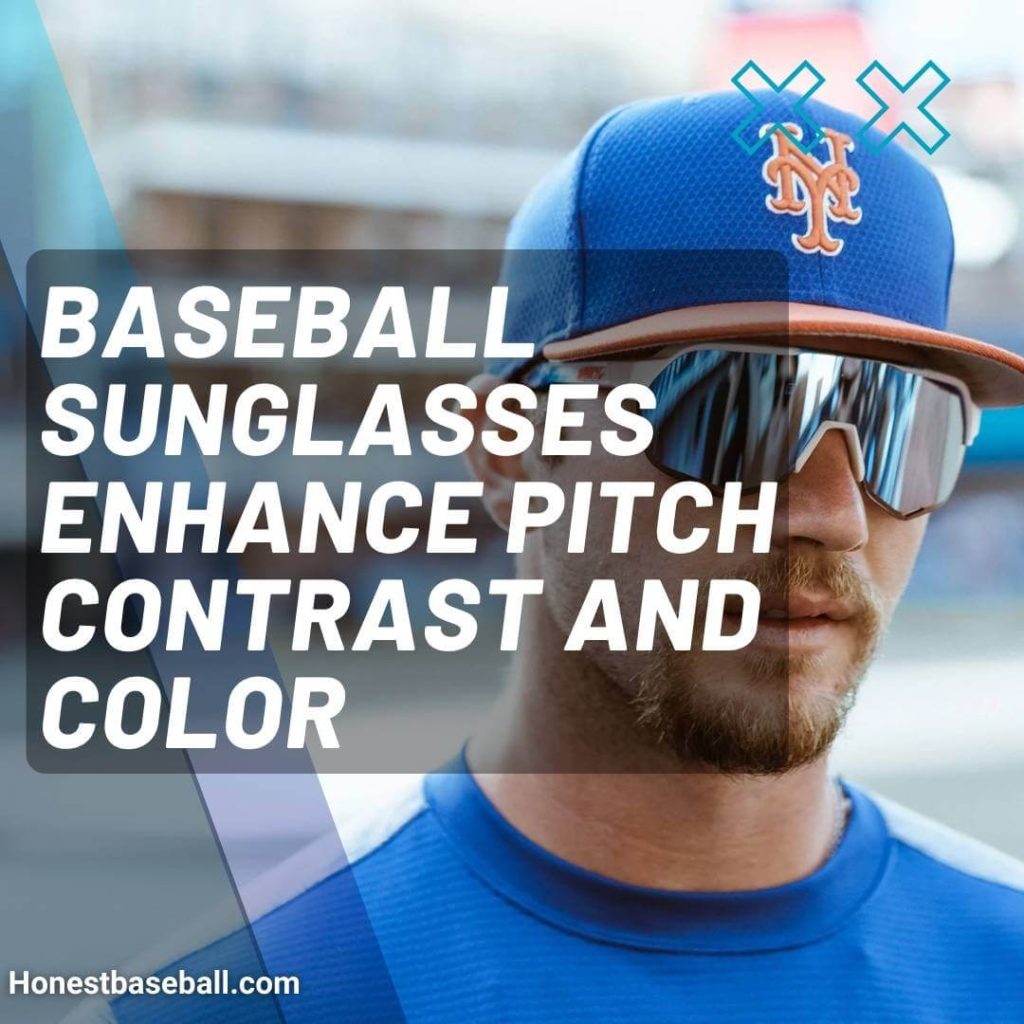
Baseball sunglasses range in price from $30 to $200, depending on the brand. Even though polarized versions are available and touted as superior to the standard version, I suggest you stick to the latter.
These are some of the best baseball sunglasses in 2025. They not only look cool but also protect your eyes from the sun.
5. Mouthguard – More Than Just Protecting Your Pearly Whites
Okay, so the most obvious reason you wear a mouthguard in baseball is protection. Think about those close plays at the plate, a stray pitch that gets away, or even a collision in the outfield. A quality mouthguard acts like a cushion for your teeth, gums, lips, and even your jaw, significantly reducing the risk of painful and costly dental injuries. Nobody wants to lose a tooth out on the field!
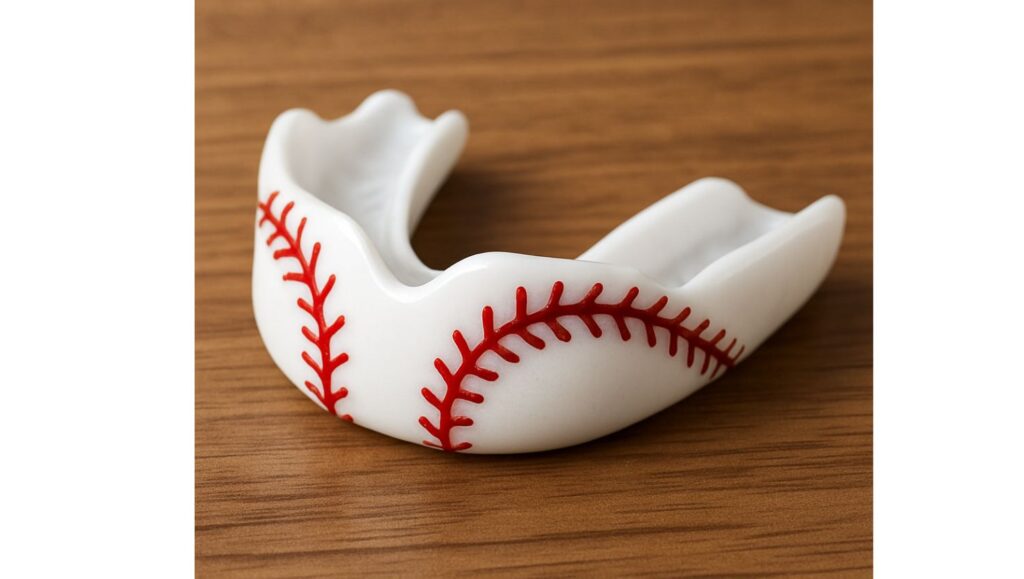
But here’s where it gets interesting – a good mouthguard can actually have some surprising performance benefits too. You mentioned ventilation, biting, and lower jaw posture, and you’re spot on!
- Improved Breathing (Ventilation): Some modern mouthguard designs, especially the more advanced ones, are engineered with channels or specific shapes that help maintain airflow. This means you can breathe more easily, which is crucial when you’re hustling around the bases or locked in during a long inning. A comfortable and well-ventilated mouthguard won’t make you feel like you’re struggling for air.
- Enhanced Biting and Jaw Stability: When your jaw is properly aligned and stable, it can actually contribute to overall athletic performance. A custom-fitted or high-quality boil-and-bite mouthguard helps achieve this. It creates a more solid and balanced bite, which can translate to more power when you’re swinging the bat or throwing a fastball. Think of it as creating a more stable foundation for your upper body.
- Better Lower Jaw Posture and Body Alignment: This might sound a little out there, but the position of your lower jaw can actually influence the alignment of your entire body, all the way up to your neck and shoulders. A properly fitted mouthguard can help position your jaw in a more natural and balanced way. This subtle improvement in alignment can potentially reduce tension in your neck and upper back, allowing for more fluid and efficient movements. It’s all connected!
Types of Baseball Mouthguards:
You’ve got a few options when it comes to mouthguards:
- Stock Mouthguards: These are the most basic and least expensive. They come pre-formed and often don’t offer the best fit or protection. They can also sometimes hinder breathing and speaking.
- Boil-and-Bite Mouthguards: These are a popular choice. You heat them in hot water to soften the material and then bite down on them to create a more customized fit to your teeth. They offer better protection and comfort than stock mouthguards.
- Custom-Fitted Mouthguards: These are the gold standard. They are made by a dentist based on an impression of your teeth, providing the most comfortable, secure, and protective fit. They also tend to offer the best performance benefits.
Choosing the Right Mouthguard:
When picking a mouthguard for baseball, make sure it:
- Fits snugly and comfortably: It shouldn’t shift around in your mouth.
- Allows you to breathe and speak relatively easily.
- Doesn’t interfere with your vision.
- Provides adequate protection for all your teeth.
While it might seem like a small piece of equipment, a good mouthguard is an essential investment in your safety and can even contribute to your performance on the baseball field. Don’t overlook this important piece of gear!
6. Baseball Cap
A baseball cap is a soft hat with a rounded crown and just a stiff bill that protrudes from the front of the hat. Baseball hats with club logos can protect your eyes and promote your team. Every fielder must wear their team’s cap.
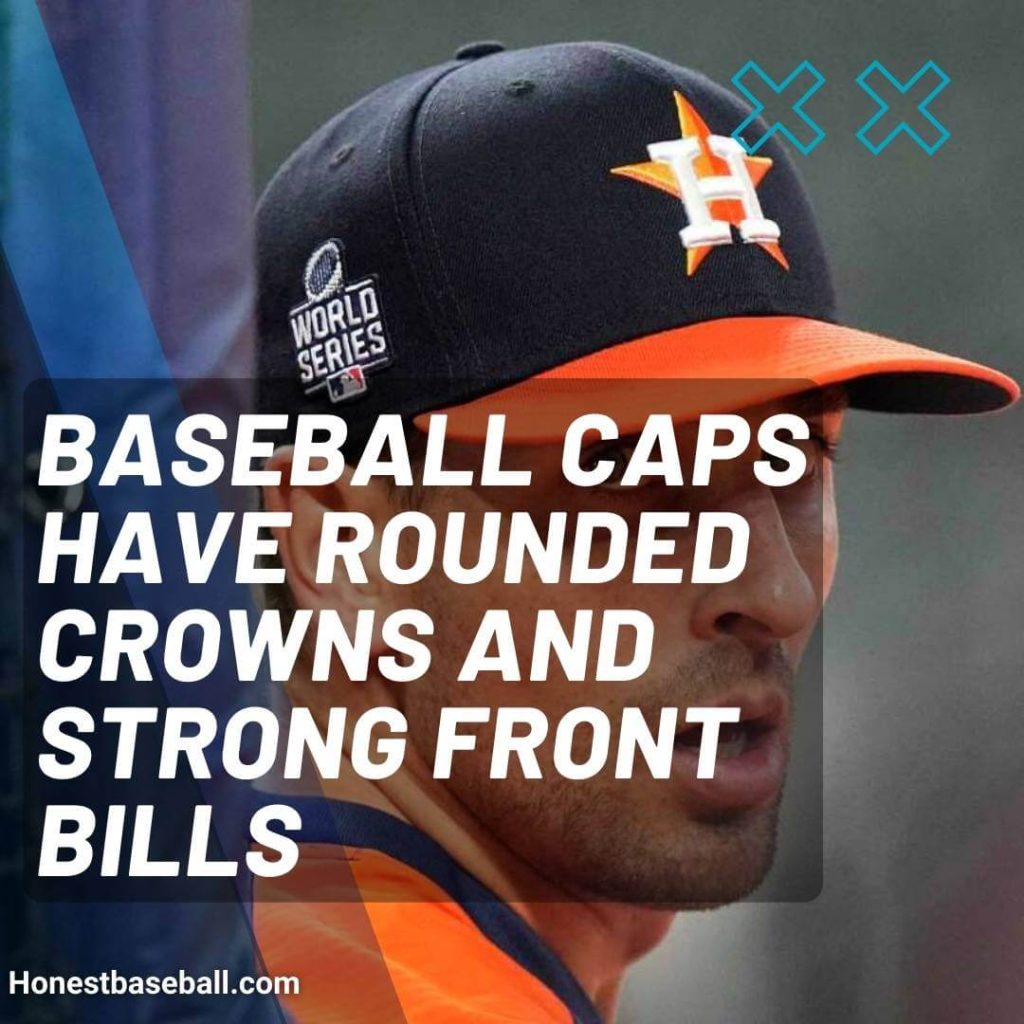
But the baseball cap has evolved into so much more than just functional gear. It’s become a powerful symbol of team identity and loyalty. From Little League to the Major Leagues, every team proudly sports caps emblazoned with their logo and colors. Wearing your team’s cap is a visual declaration of who you’re rooting for, a way to connect with fellow fans and show your pride.
Beyond team affiliation, the baseball cap has transcended the sport itself to become a ubiquitous fashion accessory. You see people rocking baseball caps everywhere – at the grocery store, the gym, concerts, you name it.
It’s a casual and versatile piece of headwear that can add a sporty or laid-back vibe to any outfit. The sheer variety of styles, colors, and logos available means there’s a baseball cap out there to suit almost any personal taste.
Think about the different types too – fitted caps for a clean, specific size; adjustable snapbacks and Velcro straps for a more relaxed fit; even different crown heights and brim shapes contribute to the overall look and feel.
So, whether it’s keeping the sun out of your eyes as you round third, showing your team spirit in the stands, or adding a touch of cool to your everyday look, the baseball cap is a simple yet iconic piece of headwear that’s deeply ingrained in both the sport and our culture. It’s a small piece of fabric with a big impact.
7. Bags
You can’t be considered professionally a baseball player unless you’re carrying a baseball bag. That isn’t the only point, however. It’s about making your life easier and more organized by keeping all of your belongings in one place.
Here are some things to keep in mind while you shop for baseball bags:
- How many bats should it hold? Some bat packs contain three or four.
- Should my ball glove and cleats have their own compartments?
Read some Reviews:
Top Baseball Bags With Wheels In 2025
7 Top Catchers Bags | Put All Your Gear In A Single Catcher’s Bag
DeMarini Special Ops Front Line Wheeled Bag Review | The Classic Sensation
The Essentials (What You Need to Know Quickly):
- Purpose: To carry and organize baseball gear to and from the field.
- Key Features: Durability, adequate storage space, and often specialized compartments.
- Focus: Functionality and protection of your equipment.
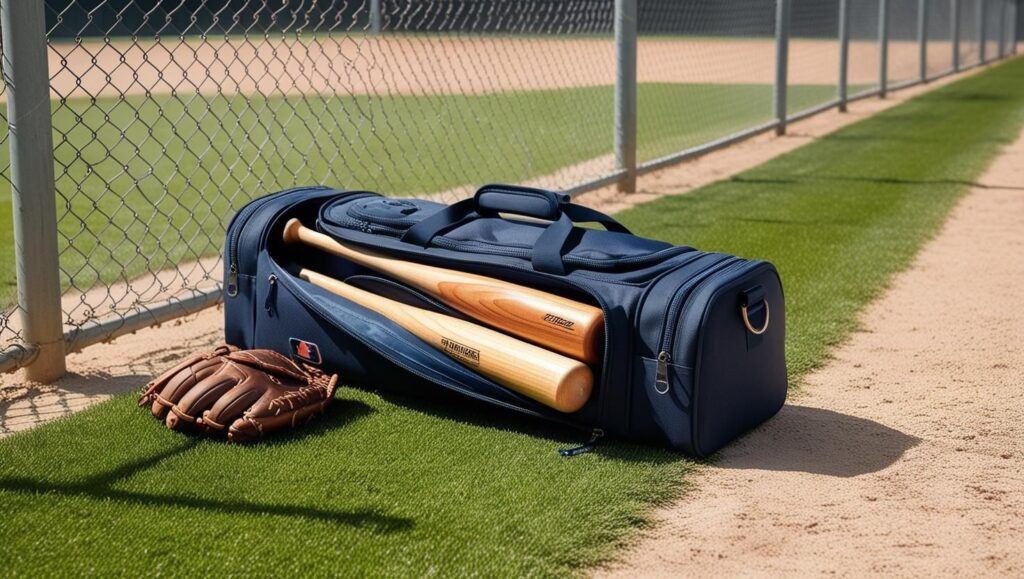
Types of Baseball Bags:
- Bat Bags:
- Primary Feature: Dedicated sleeves for multiple bats (typically 2-8).
- Additional Storage: Large main compartment for helmet, glove, and other gear; smaller pockets for accessories.
- Mobility Options: Some include wheels and telescoping handles for easier transport.
- Glove Bags:
- Primary Feature: Specifically designed to protect a fielding glove.
- Construction: Often padded and ventilated to maintain glove shape and prevent moisture buildup.
- Size: Generally smaller than bat bags.
- Equipment Bags/Duffel Bags:
- Primary Feature: General storage for various equipment.
- Design: Typically a large main compartment with fewer specialized bat sleeves.
- Versatility: Can be used by players carrying fewer bats or for other sports.
Frequently Asked Questions
1. What Do Baseball Players Wear?
Every player needs a baseball cap to protect their face and eyes from the scorching summer heat, a pair of baseball socks or stirrups, a pair of knee-high or longer trousers, a pair of shoes with rubber cleats, and a shirt or jersey.
2. Why Do Baseball Players Wear Necklaces?
There are certain baseball players who, out of superstition, insist on wearing chains whenever they take the field. It’s been said that using it may assist hitters hit home runs and striking out more batters. Some of the best major league baseball players, such as Jon Lester and Justin Verlander, believe that accessorizing has improved their game.
3. What Safety Equipment Is Required for Baseball?
Catchers should always wear a helmet, facemask, neck protection, full-length chest protector, athletic supporter with a cup, shin guards, and a catcher’s mitt whether catching pitches in the game, bullpen, or warmups. To aid in their performance, all players should wear athletic supporter braces.
Conclusion
These are some of the most important Baseball Equipment and Accessories you will need during your career. In special cases, you may need more of this list.
Baseball gear protects players’ hands, faces, heads, chests, and shins against serious injury.
I began playing baseball in my backyard using the above-mentioned equipment as a player. You will want far more equipment for professional games. However, these are the foundations that you will need to get started.

Hello everyone. My name is Jason Butler, and I live in California, America. I was a professional AAA Minor League Baseball player. I lost my chance of playing MLB for injury issues, but I did not lose my love for baseball. I attended the coaching training program and am now working as a coach in a small school in San Diego.
I always love to share my experience and knowledge if that can help you. Play baseball, and stay fit.
